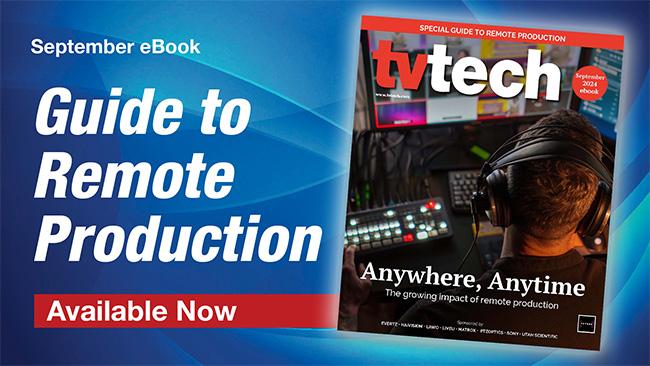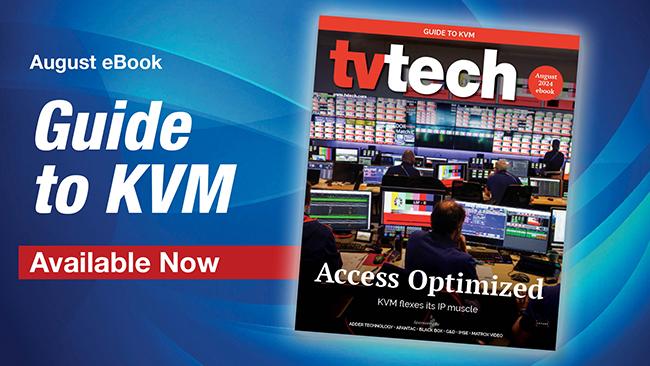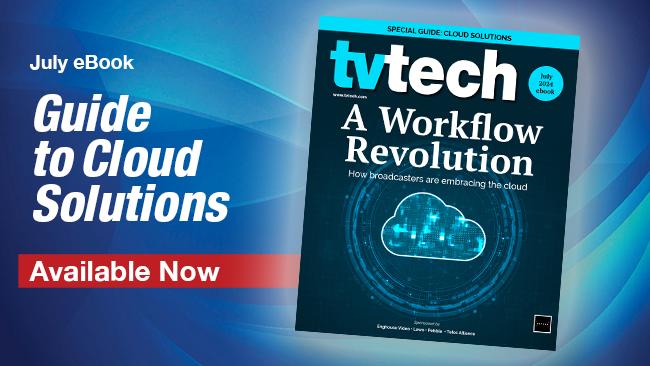Webinar To Examine State Of Social Media In TV Newsrooms
BURLINGTON, Mass.—The rise of social media, digital and smartphones as go-to sources of news and information for millions of consumers is transforming how broadcasters view their role as a critical source of news, weather and sports, says Ray Thompson, director of Market Solutions, Broadcast & Media at Avid.
“Just repurposing stories that go out over traditional OTA [over-the-air] broadcast won’t cut it,” he says Thompson. “Having a social/digital strategy is a requirement as data shows more and more people rely on mobile and social platforms for their news/sports source.”
To register for the “Social Media Platforms –Profit or Problems” webinar, Nov. 21, click here.

Thompson and Craig Wilson, product evangelist, Broadcast & Media at Avid, will present their perspectives on the evolution of TV newsrooms as they leverage social, digital and mobile Nov. 21 at 1 p.m. EDT during the “Social Media Platforms –Profit or Problems” TVTechnology webinar, sponsored by Avid Technology. (Full disclosure: I am moderating this hour-long webinar.)
In the past, journalists focused their efforts on creating news stories for TV or one particular news show or bulletin with specific deadlines, says Wilson. “Now they need to be able to produce across many platforms and meet almost instant deadlines.”
No longer do journalists hold stories till airtime. Today, they are looking to publish as soon as they have information and then refine and update the story throughout the day as well as produce a package for the evening news, says Wilson.
As a consequence, workflows and the thinking of journalists and news managers are changing in newsrooms. “Journalists now have lots of competing demands for their time, and it requires a new, creative mindset to deliver throughout the day on these platforms and then on-air,” adds Wilson.
One workflow strategy that’s popular among stations is merging traditional TV news teams with digital/social media teams into a single unit. “Even if they are not merged, stations want them to collaborate and to be as efficient as possible so they can pool their resources and deliver the biggest bang for their buck in terms of content production,” adds Wilson.
While disruptive to traditional TV newsroom workflows, these new platforms offer broadcasters that leverage their full potential benefits that extend far beyond bringing news to consumers faster, says Thompson.
“As producers develop content, they may be publishing to different social, web and app platforms that are built to cater to different demographics,” he says. “This can help stations realize higher ad rates and higher CPMs as the ads served are easier to deliver to a specific audience and demographic group.”
The availability of analytics about consumers of news on these social and digital platforms enables broadcasters and other content creators to deliver metrics to ad buyers looking to reach different groups with ads, he says.
“To be successful, content creators and publishers must deliver a TV-like experience –meaning no buffering—to any device, anywhere, anytime, then measure both the network –meaning reliability--and the playback, including who is watching, for how long and potentially where, and last but not least, develop a more catered experience based on the types of content and shows a user is watching,” says Thompson.
To register for the “Social Media Platforms –Profit or Problems” webinar, Nov. 21, click here.
Get the TV Tech Newsletter
The professional video industry's #1 source for news, trends and product and tech information. Sign up below.
Phil Kurz is a contributing editor to TV Tech. He has written about TV and video technology for more than 30 years and served as editor of three leading industry magazines. He earned a Bachelor of Journalism and a Master’s Degree in Journalism from the University of Missouri-Columbia School of Journalism.













